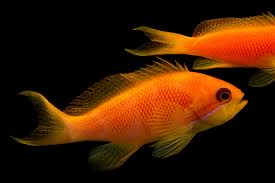Modern Dragon Monuments Integrating with Green Architecture: A Harmonious Blend of Tradition and Sustainability

In recent years, the fusion of modern architecture with sustainable design has become a defining trend across the globe. Green architecture, which prioritizes environmentally friendly and energy-efficient building practices, is reshaping the way we approach urban planning and construction. Simultaneously, the resurgence of symbolic structures in architecture has brought ancient and mythological themes back into the spotlight. One such symbol that has persisted across cultures and time is the dragon, a powerful figure in folklore and history. Today, architects and designers are creating modern dragon monuments that not only pay homage to this mythical creature but also incorporate principles of green architecture, promoting environmental sustainability while preserving cultural heritage.
This article explores the intersection of modern dragon monuments and green architecture, examining how these symbolic structures merge ancient traditions with cutting-edge sustainable design. It delves into the cultural significance of dragons, the principles of green architecture, and the innovative ways in which these two elements are being harmoniously integrated to create sustainable, meaningful, and visually striking landmarks.
The Cultural Significance of Dragons in Architecture
Dragons have held a prominent place in architecture for centuries, particularly in East Asian cultures. These mythical creatures, often seen as symbols of power, protection, and good fortune, have been integrated into various architectural designs, from the grandiose palaces of emperors to religious temples and public monuments. The dragon is a symbol of strength, wisdom, and protection, qualities that have made it a fitting motif for monumental structures that represent the values and aspirations of a culture.
In Chinese culture, for example, the dragon has long been associated with imperial authority. Emperors were often referred to as the “Son of Heaven” and were symbolically linked to the dragon, which was believed to have control over the natural elements and the cosmos. This association with power and divinity made dragons a central figure in Chinese palaces, temples, and other important structures. The use of dragon imagery in architecture served to communicate the power and influence of the ruling class, as well as to invoke protection and prosperity for the people.
In other cultures, such as those of Japan, Korea, and Southeast Asia, dragons are similarly revered as symbols of protection and auspiciousness. Their presence in architectural forms often signifies a connection between the earthly and the spiritual realms, as well as a desire to harmonize with nature and the elements.
The Rise of Green Architecture: A Focus on Sustainability
Green architecture, also known as sustainable or eco-friendly architecture, is a design philosophy that seeks to reduce the negative environmental impact of buildings by using sustainable materials, energy-efficient technologies, and environmentally responsible building practices. This movement has gained significant momentum in recent decades as the world grapples with climate change, resource depletion, and environmental degradation.
The core principles of green architecture revolve around minimizing the carbon footprint of a building, using renewable resources, reducing waste, and promoting energy efficiency. Green buildings often incorporate features such as solar panels, green roofs, rainwater harvesting systems, and natural ventilation to reduce energy consumption and minimize the use of non-renewable resources. In addition, green architecture aims to create spaces that are not only environmentally sustainable but also comfortable and healthy for occupants.
As the demand for sustainable design grows, architects and urban planners are increasingly looking for innovative ways to blend cultural and historical elements with modern green building practices. One fascinating example of this trend is the integration of traditional symbols, like the dragon, into sustainable architecture.
The Intersection of Modern Dragon Monuments and Green Architecture
The merging of dragon symbolism with green architecture is a relatively recent but compelling development. Designers and architects are increasingly incorporating dragon-themed monuments and structures into sustainable designs, creating landmarks that are not only visually striking but also environmentally responsible. These modern dragon monuments serve as a bridge between ancient traditions and contemporary sustainability, offering a unique way to honor cultural heritage while promoting eco-friendly values.
1. Dragon-Shaped Green Buildings: A New Era of Iconic Design
One of the most prominent ways in which dragons are being integrated into modern architecture is through the design of dragon-shaped green buildings. These buildings often feature the sinuous curves, scales, and features of the dragon, creatively incorporated into their form while adhering to green architectural principles. These dragon-shaped structures can serve as cultural landmarks, celebrating the power and mystique of the dragon, while also contributing to sustainable urban development.
For example, a dragon-shaped building may use natural ventilation systems to reduce reliance on air conditioning, or incorporate solar panels to generate clean energy. Green roofs, which are covered with vegetation, can be used to promote biodiversity and reduce heat island effects in urban areas, while also adding to the organic, flowing aesthetic of the dragon design. These features not only contribute to environmental sustainability but also create visually captivating structures that capture the imagination of those who encounter them.
2. Dragon Monuments with Green Infrastructure
Another innovative way that modern dragon monuments are incorporating green architecture is through the use of green infrastructure in the surrounding landscape. Green infrastructure refers to a set of practices that use natural systems to manage water, reduce pollution, and improve air quality. When combined with dragon monuments, green infrastructure can enhance the environmental performance of the site while preserving the aesthetic and cultural significance of the monument.
For instance, a dragon monument may be placed within a public park that features sustainable landscaping practices, such as the use of native plants, permeable pavements, and rain gardens. These design elements help to manage stormwater runoff, reduce the urban heat island effect, and promote biodiversity. The dragon, as a symbol of protection and harmony with nature, becomes a powerful visual representation of the connection between cultural heritage and ecological responsibility.
In addition, the use of green infrastructure can create a more comfortable and livable environment for those who interact with the dragon monument. Shade from strategically placed trees, green walls, and outdoor seating areas can all contribute to a pleasant public space that encourages social interaction and community engagement. By combining traditional symbolism with modern environmental solutions, these dragon monuments become more than just decorative structures—they become functional and sustainable elements of the urban landscape.
3. The Role of Dragon Monuments in Eco-Tourism
The integration of dragon monuments into green architecture can also play a significant role in the burgeoning eco-tourism industry. As travelers increasingly seek destinations that offer both cultural experiences and environmental sustainability, eco-friendly monuments like dragon-themed structures provide a unique opportunity to attract visitors while promoting sustainable tourism practices.
Dragon monuments, especially those located in natural or park settings, can serve as focal points for eco-tourism initiatives. By incorporating educational elements about sustainability, renewable energy, and environmental conservation, these monuments can raise awareness about the importance of preserving both cultural heritage and the environment. Visitors to these sites can learn about the significance of the dragon in various cultures while also being exposed to innovative green technologies and practices.
Furthermore, eco-tourism initiatives surrounding dragon monuments can generate economic benefits for local communities. Sustainable tourism creates jobs, supports local businesses, and helps fund conservation efforts, all while encouraging responsible travel practices that minimize negative environmental impacts.
4. The Symbolic Meaning of Dragons in Sustainable Architecture
The dragon, as a symbol of power, protection, and harmony with nature, resonates deeply with the principles of green architecture. In traditional Chinese culture, for example, the dragon is often seen as a guardian of nature, controlling the forces of water, wind, and earth. By integrating dragons into green architectural designs, architects can symbolically align their projects with these same values—protection of the environment, balance with the natural world, and the pursuit of prosperity and good fortune.
Dragons in modern monuments also embody the idea of transformation. Just as the dragon is often associated with transformation and renewal in mythology, green architecture aims to transform the way we think about and interact with the built environment. By reimagining the dragon in the context of green architecture, designers are creating structures that not only pay tribute to cultural traditions but also embrace the future of sustainable living.
Conclusion: A Bright Future for Dragon Monuments and Green Architecture
Modern dragon monuments that integrate green architecture represent a fascinating convergence of culture, symbolism, and sustainability. These striking structures are not only visually captivating but also serve as powerful symbols of the values and aspirations of contemporary society. By combining the mythical power of the dragon with the environmentally conscious principles of green architecture, architects and designers are creating landmarks that honor cultural traditions while promoting a more sustainable future.
As the world continues to grapple with environmental challenges, the integration of green architecture with symbolic structures like dragon monuments offers a compelling way to create a more harmonious and sustainable built environment. Through these innovative designs, the dragon can continue to inspire and protect, not only in the realms of mythology but also in the spaces where we live, work, and play.

